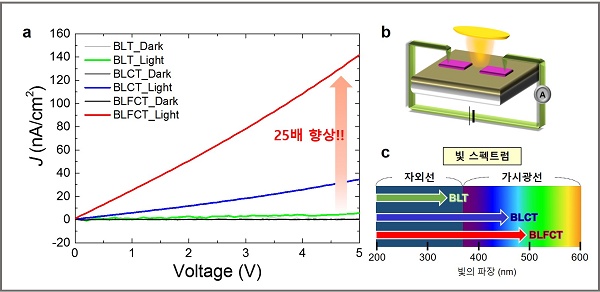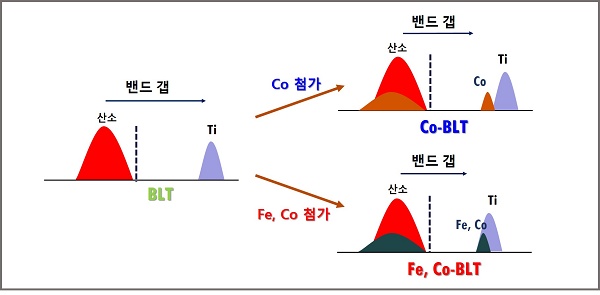Media Center
A multimedia mosaic of moments at GIST
GIST Excellence
[Press Release] Drastically improved solar light absorbing ferroelectric thin film developed
- 엘리스 리
- REG_DATE : 2016.06.27
- HIT : 763
Drastically improved solar light absorbing ferroelectric thin film developed

A team of Korean scientists developed a method of combining ferroelectric thin film and a transition element, improving solar light absorption that creates more energy.
Ferroelectric: is a property of certain materials that have a spontaneous electric polarization that can be reversed by the application of an external electric field
Transition element: are any of various chemical elements that have valence electrons—i.e., electrons that can participate in the formation of chemical bonds—in two shells instead of only one.
The research was collaboration of GIST Professor Sanghan Lee, Gachon University Chung-Wung Park and PhD student Hyun-Ji An. They succeeded implementing ferroelectric thin film by adding Fe (iron) and Co (cobalt) into ferroelectric BLT reducing band gap and raising precision photoelectric.
Ferroelectric BLT: Lanthanum-doped bismuth titanate Bi3.25La 0.75Ti3O12 (BLT) is a material used to make ferroelectric film.
Bandgap: is an energy range in a solid where no electron states can exist. It determines conductivity of electrons.
Precision photoelectric: measurements of electric current value.
The research paper has been published with the Scientific Reports on June 17, 2016.


GIST Professor Sanghan Lee said, “Simply adding transition elements, such as Fe and Co improved solar light absorption without losing its spontaneous polarization characteristics, is expected to be an important milestone in developing the next generation optical devices, such as ferroelectric solar cell research.”